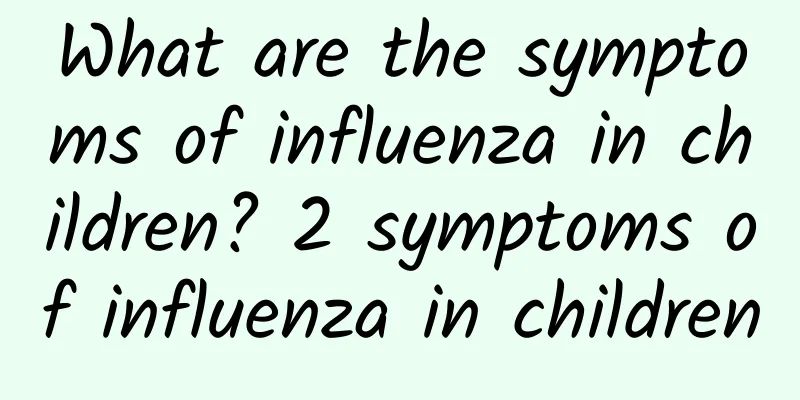How does neonatal jaundice come about? An inventory of the causes and eight symptoms of neonatal breast milk jaundice

|
In fact, there are two types of jaundice related to breast milk: one is that within one week after birth, due to difficulties in breastfeeding, the newborn's insufficient intake leads to worsening jaundice, which is called breastfeeding failure jaundice; the other is that the child is breastfed and grows and develops well, but the jaundice appears later and lasts for a long time, which is what we call breast milk jaundice. 1. Causes of neonatal jaundice due to breastfeeding failure It is currently believed that insufficient feeding in the early stage can cause jaundice. As more and more parents insist on exclusive breastfeeding, breastfeeding fails due to a lack of relevant knowledge. Some children fail to get adequate feeding, which leads to worsening jaundice and have to undergo phototherapy. This is mainly because the baby eats less after birth, has less intestinal peristalsis, and has delayed or less meconium excretion, which leads to increased intestinal reabsorption of bilirubin in the meconium, thus causing severe jaundice. In addition, some studies have shown that hunger can make the liver's bilirubin-processing enzymes inactive, resulting in the increased bilirubin in the body not being processed in time. Breastfeeding failure jaundice usually occurs in the first week after birth because the baby does not get enough breast milk, so there is a common feature, which is rapid weight loss after birth. Normal newborns will experience physiological weight loss within 2 or 3 days after birth, and the decline is about 4-7% of the birth weight. If the weight loss exceeds 10% of the birth weight, it means that the child is not taking in enough milk and is prone to breastfeeding failure jaundice, so early feeding of newborns is very important. 2. Causes of Breast Milk Jaundice Parents who choose to exclusively breastfeed or mainly breastfeed will face another problem, that is, nearly one-third of their children will have persistent jaundice. This type of jaundice appears later, usually one week after birth, and most lasts for 4-6 weeks, and some even last for 2-3 months. This is what we call breast milk jaundice. We found that the jaundice of children with breast milk jaundice can be significantly reduced after temporarily stopping breastfeeding and switching to formula feeding, but the jaundice will increase again after breastfeeding again. Therefore, it is speculated that it is caused by some substances in breast milk, which is generally believed to be a substance called β-glucuronidase. This enzyme can hydrolyze the conjugated bilirubin in the child's small intestine that should be excreted, converting it into unconjugated bilirubin, which is then reabsorbed back into the body by the intestines, causing persistent jaundice. 3. Check out the causes and eight symptoms of neonatal breast milk jaundice 1. Jaundice does not subside: It occurs during the period of physiological jaundice, that is, 2 days to 2 weeks after birth, but does not disappear with the disappearance of physiological jaundice. 2. Jaundice degree: It is mainly mild and moderate, severe is rare, and unconjugated bilirubin is more common. 3. Good general condition: The baby is completely healthy except for jaundice, eats well, has normal bowel movements, satisfactory weight gain, no enlarged liver and spleen, normal liver function, and HBsAg is negative. 4. Jaundice subsides rapidly after stopping breastfeeding: Jaundice is significantly relieved 48-72 hours after stopping breastfeeding, and bilirubin quickly drops to about 50% of the original level. After re-breastfeeding, serum bilirubin will rise within 1-2 days, and then slowly decrease after a period of time. Bilirubin will also drop to normal by itself if breastfeeding is not stopped. 5. Good nutritional development, weight gain, normal bowel movements, and normal stool color. 6. No enlarged liver and spleen. 7. Normal liver function and no anemia. 8. Jaundice usually appears 4-5 days after birth and gradually worsens. Elevated bilirubin can last for about 10 days, and then the jaundice gradually subsides and returns to normal levels in 3-12 weeks. 4. How to prevent neonatal breast milk jaundice 1. During pregnancy, mothers should pay attention to food hygiene, avoid alcohol and spicy foods, and do not abuse drugs. 2. In order to reduce the occurrence of this disease, it is encouraged to increase the early breast milk intake of newborns, which can increase the heat in the newborn's body and reduce the activity of glucuronidase. 3. Adhere to the principle of frequent feedings in small amounts, increase the frequency of bowel movements, and reduce intestinal absorption of bilirubin, which can reduce the incidence of jaundice. 4. Provide children with supportive therapies such as keeping warm, increasing calories, and preventing infection to prevent worsening of jaundice. 5. After the baby is born, it is advisable to closely observe the jaundice of the skin for timely diagnosis and treatment. |
>>: What are the main clinical symptoms of hepatitis C? Symptoms of acute icteric hepatitis C
Recommend
Causes of neonatal jaundice
The main causes of neonatal jaundice include phys...
What are the tests for mumps in children?
For patients with mumps, the treatment process is...
Mumps prevention and health care in daily life
It is very common for children to develop mumps i...
Is Jingling Oral Liquid Useful for Children with ADHD?
Drinking Jingling Oral Liquid may help children w...
What to do if your baby has a cold? Here are 3 things you must do if your baby has a cold
When taking care of their babies, many mothers ar...
Pay attention to the strange bump on your child's stomach - hernia in children
Nowadays, every child is an infant, and the whole...
How to treat eczema in children
Pediatric eczema can be treated with topical medi...
My baby has allergic rhinitis and always coughs
If a baby has allergic rhinitis and always coughs...
How to treat cough caused by allergic rhinitis in babies
When babies have allergic rhinitis, it can cause ...
Is pneumonia hereditary in children?
Pneumonia is not a hereditary disease, but a comm...
What are the symptoms of mumps
Mumps, this name may sound unfamiliar, but it is ...
What are the examination methods for mumps
Nowadays, both the pace of life and the pace of s...
How about the oral liquid for pediatric lung heat, cough and asthma? The oral liquid for pediatric lung heat, cough and asthma is not effective when used alone.
If a child is taking pediatric oral liquid medici...
Where does the rash first appear in hand, foot and mouth disease?
Hand, foot and mouth disease is a common childhoo...
Can acute laryngitis in children be cured?
Acute laryngitis in children is mostly caused by ...









